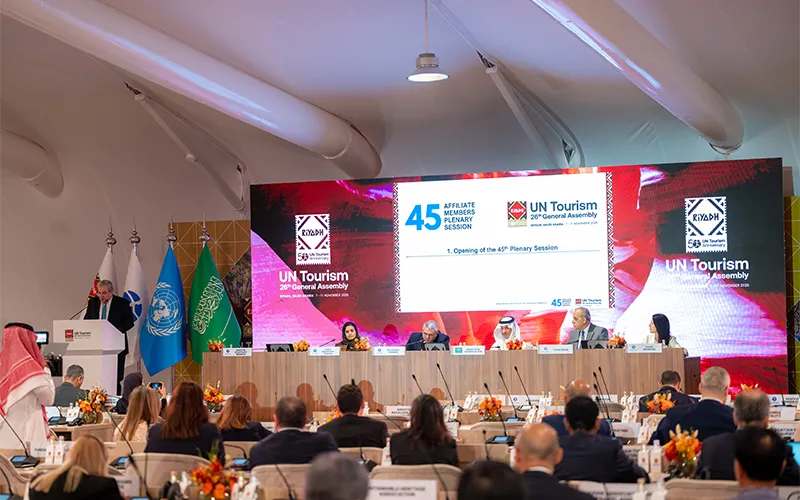Green Power, Low-Carbon Steel Can Cut Auto Industry Emissions by 87 Percent : CEEW Report – Energetica India Magazine

Report on Decarbonization Pathways for India’s Automobile Manufacturing Sector and Alignment with Sustainable Development Goals
Executive Summary
A study by the Council on Energy, Environment and Water (CEEW) indicates that India’s automobile manufacturing sector can achieve an 87% reduction in carbon emissions by 2050. This transition, driven by the adoption of green electricity and low-carbon steel, is critical for advancing several Sustainable Development Goals (SDGs), particularly SDG 13 (Climate Action). The report outlines a decarbonization pathway that could lower annual emissions from 64 million tonnes of CO₂ to 9 million tonnes, enhancing the global competitiveness of Indian automakers and contributing to a sustainable industrial future.
Current Emissions Landscape and Future Projections
Despite improvements in per-vehicle emission efficiency, India’s total manufacturing emissions are projected to double by 2050 if current practices continue. This is due to an anticipated four-fold increase in vehicle production, from 25 million units in 2020 to 96 million by 2050. The steel industry, a primary supplier, remains the largest contributor to the sector’s carbon footprint, posing a significant challenge to achieving climate targets.
Strategic Pathways to Net-Zero and SDG Alignment
The CEEW report models a net-zero pathway that requires fundamental shifts in energy and material sourcing. These strategies are directly aligned with key SDGs:
- SDG 7 (Affordable and Clean Energy): The model mandates a complete transition to 100% renewable electricity for all Original Equipment Manufacturer (OEM) operations and their supply chains, including rubber suppliers.
- SDG 9 (Industry, Innovation, and Infrastructure): Achieving net-zero requires significant industrial innovation, particularly in steel production. The pathway includes sourcing up to 56% of the steel industry’s energy mix from green hydrogen.
- SDG 12 (Responsible Consumption and Production): The report emphasizes a shift towards circular economy principles by increasing the use of scrap-based steel to 48% of total production. Adopting low-carbon steel alone could prevent 38 million tonnes of CO₂ emissions by 2050.
- SDG 13 (Climate Action): The collective implementation of these measures forms a robust strategy for climate mitigation, directly addressing the core objective of reducing greenhouse gas emissions from a major industrial sector.
Analysis of Transitional Technologies and Supply Chain Responsibility
While major OEMs like Tata Motors and Mahindra & Mahindra have committed to net-zero goals, the report stresses that decarbonization must extend throughout the supply chain. The study also evaluates the role of hybrid vehicles, concluding they are a short-term transitional solution. A high-hybrid scenario still results in higher emissions due to the continued use of combustion engines, making a direct shift to zero-emission vehicles a more effective strategy for long-term alignment with SDG 13.
Key Recommendations for Policy and Industry Action
To realize the decarbonization potential and meet SDG targets, the report recommends a coordinated, multi-faceted approach:
- Foster Multi-Stakeholder Collaboration: In line with SDG 17 (Partnerships for the Goals), OEMs, component suppliers, and policymakers must engage in coordinated action to align the entire value chain with sustainability objectives.
- Implement Green Procurement Policies: OEMs should make long-term procurement commitments for green steel and other low-carbon materials to stimulate market demand and drive investment in sustainable production, supporting SDG 12.
- Strengthen Policy Frameworks: Government must provide strong and clear policy signals to de-risk and unlock private investment in clean manufacturing technologies, which is essential for scaling up innovations under SDG 9.
- Adopt a Dual-Focus Strategy: Efforts to accelerate electric vehicle adoption must occur in parallel with the decarbonization of manufacturing processes. This comprehensive approach addresses a vehicle’s full lifecycle emissions, contributing to SDG 11 (Sustainable Cities and Communities) and SDG 13.
SDGs Addressed in the Article
- SDG 7: Affordable and Clean Energy
- SDG 9: Industry, Innovation, and Infrastructure
- SDG 11: Sustainable Cities and Communities
- SDG 12: Responsible Consumption and Production
- SDG 13: Climate Action
Specific SDG Targets Identified
-
Target 7.2: Increase substantially the share of renewable energy in the global energy mix.
The article directly supports this target by proposing that India’s automobile manufacturing sector should shift to “100 percent renewable electricity across all OEM operations.” It also highlights the use of “solar power” and “green electricity” as key strategies for decarbonization.
-
Target 9.4: Upgrade infrastructure and retrofit industries to make them sustainable, with increased resource-use efficiency and greater adoption of clean and environmentally sound technologies and industrial processes.
This target is central to the article’s theme. The CEEW study outlines a clear pathway for retrofitting the auto industry by adopting “low-carbon steel,” “hydrogen-based steelmaking,” and shifting to “renewable electricity.” The goal is to make the entire manufacturing process sustainable and globally competitive.
-
Target 11.6: Reduce the adverse per capita environmental impact of cities, including by paying special attention to air quality.
While the article’s main focus is on manufacturing, it connects to this target by advocating for the “speed up electric vehicle adoption” to “cut tailpipe emissions.” It notes that 65-80% of a vehicle’s lifetime emissions come from its usage, making the shift to EVs crucial for improving urban air quality.
-
Target 12.2: Achieve the sustainable management and efficient use of natural resources.
The article addresses this target by recommending “ramping up scrap-based steel to 48 percent of total production.” This promotes a circular economy model, reducing the demand for virgin raw materials and ensuring more efficient use of resources within the steel and auto industries.
-
Target 13.2: Integrate climate change measures into national policies, strategies and planning.
The article discusses a strategic plan for a key industrial sector to align with climate goals. It mentions that major companies like “Tata Motors, Mahindra & Mahindra, TVS Motors” are already committing to “net-zero goals,” and the report itself serves as a strategic decarbonization pathway to integrate climate action into industrial planning.
Indicators for Measuring Progress
-
Share of Renewable Energy in Total Energy Consumption (Indicator 7.2.1)
The article implies this indicator by stating the net-zero pathway requires “100 percent renewable electricity across all OEM operations” and “significant hydrogen use in steelmaking (up to 56 percent of energy mix).” These percentages are direct measures of progress.
-
CO₂ Emission per Unit of Value Added (Indicator 9.4.1)
The article provides concrete data that can be used as an indicator of progress. It quantifies the potential reduction in emissions from “64 million tonnes of CO₂ today to just 9 million tonnes by mid-century.” It also specifies that sourcing low-carbon steel alone could “avoid 38 million tonnes of CO₂ emissions by 2050.”
-
Share of Recycled Material in Production
An indicator for responsible production is explicitly mentioned with the recommendation of “ramping up scrap-based steel to 48 percent of total production.” This provides a clear, measurable target for tracking the use of recycled materials.
-
Adoption Rate of Zero-Emission Vehicles
The article implies this as a key indicator by concluding that hybrids “will need to be phased out in favor of zero-emission vehicles” and calls to “speed up electric vehicle adoption.” Tracking the market share of EVs versus hybrid and combustion engine vehicles would measure progress toward this goal.
Summary of SDGs, Targets, and Indicators
| SDGs | Targets | Indicators |
|---|---|---|
| SDG 7: Affordable and Clean Energy | 7.2: Increase the share of renewable energy. | Share of renewable energy in manufacturing (Goal: 100% for OEMs); Share of hydrogen in steelmaking energy mix (Goal: 56%). |
| SDG 9: Industry, Innovation, and Infrastructure | 9.4: Upgrade industries with clean and sustainable technologies. | Total CO₂ emissions from the auto manufacturing sector (Reduction from 64 Mt to 9 Mt by 2050). |
| SDG 11: Sustainable Cities and Communities | 11.6: Reduce the adverse environmental impact of cities (e.g., air quality). | Adoption rate of zero-emission vehicles to reduce tailpipe emissions. |
| SDG 12: Responsible Consumption and Production | 12.2: Achieve sustainable management and efficient use of natural resources. | Share of scrap-based steel in total production (Goal: 48%). |
| SDG 13: Climate Action | 13.2: Integrate climate change measures into policies and planning. | Reduction in total greenhouse gas emissions; Avoided CO₂ emissions from green steel (38 Mt by 2050). |
Source: energetica-india.net

What is Your Reaction?
 Like
0
Like
0
 Dislike
0
Dislike
0
 Love
0
Love
0
 Funny
0
Funny
0
 Angry
0
Angry
0
 Sad
0
Sad
0
 Wow
0
Wow
0











































































